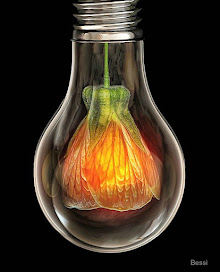 Daylight Saving Time will begin on Sunday, November 4th, accentuating shortened days that mark the coming winter. Though there are limits to enjoyment of outdoor activities in colder months, there are numerous opportunities for delight at the stove. Colder weather stimulates the appetite, which in turn yields more easily to new ingredients. Curry leaves cast a bewitching spell in the kitchen, revealing a savory perfume that captivates and comforts.
Daylight Saving Time will begin on Sunday, November 4th, accentuating shortened days that mark the coming winter. Though there are limits to enjoyment of outdoor activities in colder months, there are numerous opportunities for delight at the stove. Colder weather stimulates the appetite, which in turn yields more easily to new ingredients. Curry leaves cast a bewitching spell in the kitchen, revealing a savory perfume that captivates and comforts.When we close our eyes in gustative pleasure, the sense of hearing, smell, taste and touch are heightened. This makes the culinary experience of new ingredients more intense. Consider the feeling you get when you come in from the cold and enter a home filled with the aromas of a rich stew. Your face may feel frigid, your nose nearly numb, but your heart is warmed by the promise of a good meal. Add the element of something indescribably delicious and you have an enticing formula for sensorial discovery (not to mention affection).
The aromatic profile of curry leaves is bright and warm. They possess a distinct freshness reminiscent of citrus leaves and a meat-like aspect that is minutely sulfurous. It is no wonder that curry leaves are a staple ingredient in South Indian vegetarian cooking—they add a savory quality that bay leaves simply cannot touch. Smelling the fresh leaves makes the mouth water and the distinct sound of their sizzle in oil (which is how one liberates their flavor) leaves a lasting impression.

Fresh curry leaves are available at local Indian grocery stores. They last for two weeks in the refrigerator or may be stored in the freezer for future use. Curry leaves are not limited to bean dishes; they are excellent in eggs as well. The recipe for Curried Lentil Stew included in this post was developed with health and flavor in mind. It is high in protein, low in fat and extremely satisfying on a cold day.
Curried Lentil Stew
Recipe by Michelle Krell Kydd
(Serves 8)
Ingredients:
· 1 medium Spanish onion (chopped)
· 2 stalks of celery, (peeled and chopped)
· 2 carrots (peeled and chopped)
· 2 ½ inch finger of ginger (peeled and thinly sliced)
· 15 fresh curry leaves
· 1 package (10 oz.) frozen, chopped spinach (thawed)
· 1 package (10 oz.) frozen, puréed winter squash (thawed)
or 1 ½ cups canned pumpkin
· ½ sweet red pepper, medium-sized (diced)
· 3 ounces golden raisins or dried apricots
· 3 ounces shelled pistachios (almonds are also fine, as are cashews)
· 2 cups of texturized vegetable protein (TVP, see Flavor Notes)
· 16 ounce package of green lentils (rinsed and picked through for stones)
· 4 tablespoons of olive oil (or grapeseed oil)
· 3 tablespoons pomegranate molasses
· 4 teaspoons of sweet curry powder
· ¼ teaspoon of whole coriander seeds (heaping)
· 2 quarts and one can (14 oz.) College Inn® non-fat, low sodium chicken broth
· Cholula® brand hot sauce
· 16 oz. container of nonfat, Greek yogurt
Instructions:
· Prep all vegetables and set aside.
· Heat oil in a large soup pot and sauté curry leaves, onions and celery until onions are clear and begin to caramelize.
· Add curry powder and mix well, coating the sautéed vegetables.
· Add 2 quarts chicken stock, carrots, ginger, winter squash, red pepper, dried fruit, nuts, lentils and coriander seeds. Simmer for one and a half hours.
· Add thawed spinach, remaining can of chicken stock and pomegranate molasses. Simmer for 10 minutes.
· Add texturized vegetable protein (TVP) and simmer for 45 minutes to completion.
· Present in a soup bowl with a dollop of plain yogurt. Hot sauce is also good as it adds an interesting counterbalance to the savory and sweet flavors in the stew. Cholula® brand is best as it is moderately hot and on the citric side.
Notes:
Texturized vegetable protein (TVP) is made from soy and keeps carbohydrates in check while adding valuable nutrition and fiber. It is typically used as a substitute for meat in vegetarian dishes with a sauce base. TVP, which is cereal-like and flavorless, readily absorbs moisture and takes on the flavor of whatever it is added to. Cooked, its texture is somewhere between a meat and an al dente grain. Bob’s Red Mill TVP is sold in health food stores and online.
Curry leaves are available in the refrigerated section of Indian grocery stores. Do not used the dried version in this recipe as it has little flavor.
If you are a vegetarian, you may substitute a tomato-free vegetable stock for the chicken stock. This will meet your dietary needs, as well as the flavor requirements of the dish.
Acrylic painting of "Moon Magic" by Krista Lynn Brown. It is available for sale on the artist's website, Devaluna.














